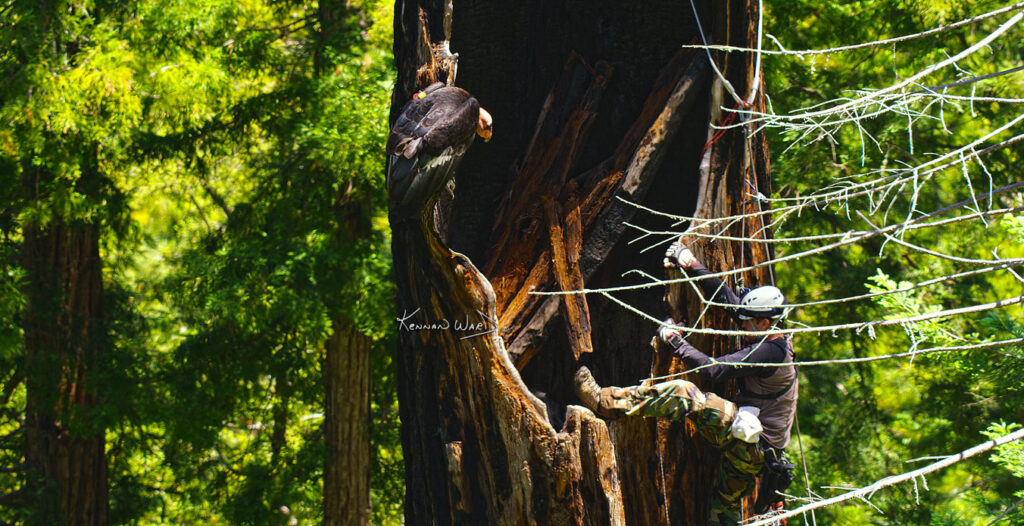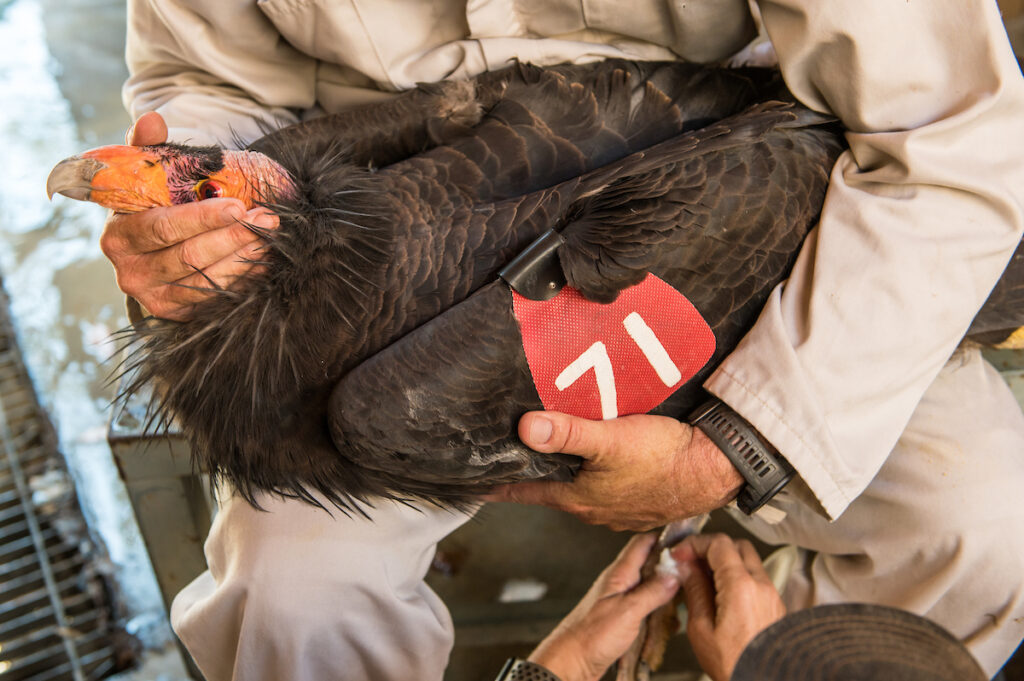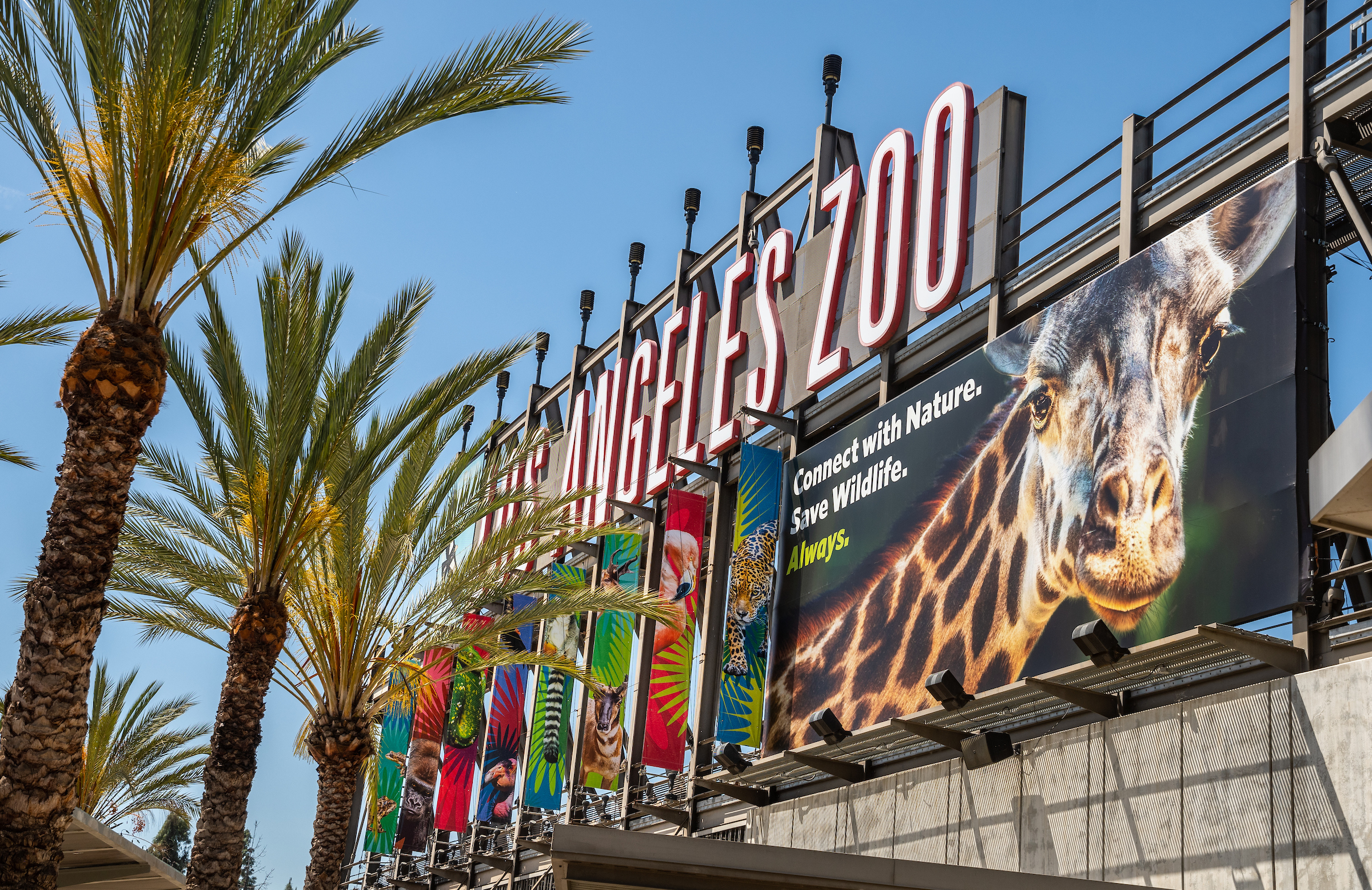by Autumn Hilden
Adventures in Recovery
Life with California condors has been filled with ups and downs for both keepers. It has demanded sacrifices of time and energy, and sometimes more.
Mike recalls with energy one of the most memorable weekends of his career. He’d been invited by Mike Wallace to make a trip to the eastern side of Mount El Diablo in Baja to check on some condors.
“So we drive down there and work,” he says. “It was like going to another planet. I’ve never seen a desert like this. You’re talking 50- to 80-foot-tall cactuses, and every piece of greenery that you see is another kind of cactus. And we’re at about sea level looking at this 10,000-foot mountain and the huge canyon leading to it. We get to the base of the canyon, and we hike way back in there. These walls have smooth granite and waterfalls, and it’s just like Jurassic Park, but on the desert side of the mountain range,” he tries to explain, still awed by the memory. “We climb up about 1,500 feet of boulders and giant cactus to the nest, and there’s this little, day-old condor chick in a big, abandoned golden eagle nest in a giant, cathedral-like rock formation that looks like a miniature Hollywood Bowl. And right in the middle of the nest is female condor 217, the first bird we reared with that new rearing method in 1999. And she’s there, an adult, sitting in this nest. I can’t believe my eyes.
“And we get down the next day. It took us a long time to get out, and we’re late. I have a show [with my band] the next day. We finally get across the border, I jump on a plane in San Diego and go to Aspen for the gig. I get there, play the show, and I fly home the next day, just in time to get in the car and drive six hours to Big Sur to do another nest entry. And I’m going, ‘This is not a normal life.’ And we’ve had countless adventures like that over 35 years.”

“My first time doing a nest entry, I’m home cooking, my kids running around in diapers,” Chandra says of the scene when the call came to step in as a climber with her colleague, veterinarian Dr. Leah Greer. “I was so honored. So we hiked out in the morning—I had never climbed, ever.”
The rigors of the trip were worth the reward, Chandra says. “You get out there and the whole time you’re thinking how you have no business being out there,” she says, remembering how the location of the nest required a very steep backwards-angle rappel. “But that’s why we’re here, doing what we do: for the birds.”

Some birds leave a lasting impression, long after they’re gone. “AC9 was here at the Zoo for years as a breeder and then was released to the wild,” Chandra recalls. “And for me, a highlight was being in a nest in the wild with him and his mate a few years after his return to the wild. You go from helping him breed in our zoo to a wild nest situation, and I can’t believe this is the same bird out here. It’s a small thing, but it feels right.”
AC9 was special to Mike as well, as he was the very last wild condor trapped in 1987. “I am in the middle of Sespe Condor Sanctuary,” he says. “There’s not a speck of trash anywhere. Couldn’t be a more wild place. I’m going to rappel 400 feet into a cave on the side of a vertical for a nest in a little crack in the solid wall. Isn’t that amazing enough? No, here comes AC9 who I took care of for 20 years in the Zoo, zooming in. He lands at the entrance of the nest, and he clearly recognized me. You cannot describe that feeling, the significance of it. At the same time, you’re terrified for him that he’s going to die of lead poisoning because it’s not safe out there. And he did. He eventually did.”
Trouble Shooting
The more people know about and see the Zoo’s work with the California condor recovery program, the better for the birds, in terms of partnership, funding, and messaging. There is one message Mike and Chandra would like to see move more to the front of the conversation about California condors.
“We’re not really talking about why we even have to do the work; we’re not talking about lead poisoning,” Mike says. Chandra explains: “The responsible thing to do as a conservation partner is to help save the species, and not just raise chicks, but also educate the public on what will save the species in the wild.” Non-lead has been the law for wildlife hunting in the state since 2019, but Mike says we’re still losing birds to lead poisoning at an unacceptable rate. It’s a subject about which he and Chandra are both passionate. Dedicating their careers to scavenger birds, they have to be: when condors feed on carcasses taken with lead ammunition, they can pick up tiny fragments of lead, putting into jeopardy all the work of the last 40 years.

“We do our best to breed and maintain these birds. Some adult pairs are in their 40s and 50s. And they’re breeding and all their progeny is going out to the wild. We incubate all the eggs, and we raise the chicks and make sure they’re healthy and make sure that every bird is well prepared for release,” Mike explains. “And then they just come back here during deer season for lead toxicity treatment.”
It can be really tough on the birds and the keepers. “They don’t just die when they get here. It’s the long process of trying to keep them alive one more day, one more hour, and you’re hoping they’ll turn a corner and sometimes they don’t.”
Into the Wild
Inevitably, some things will be left for the next generation of California condor keepers. As one who helped build the original space for the birds, Mike keenly feels that he won’t be at the Zoo to help with the next condor space. “I would love to be part of designing that exhibit,” he says.
When the next breeding season begins this winter, Mike and Chandra will be somewhere else, but one thing is for sure. “I need to retire,” Mike says, “but I’ll never tire of this.”

